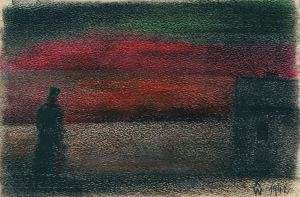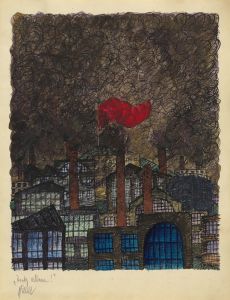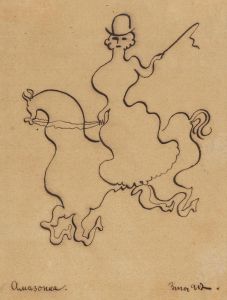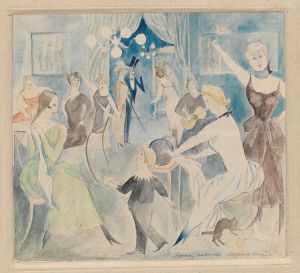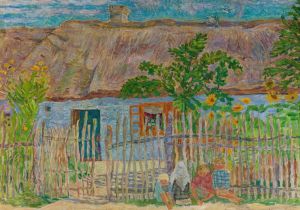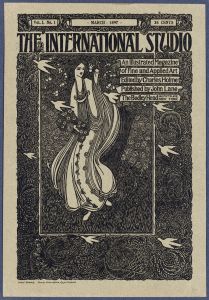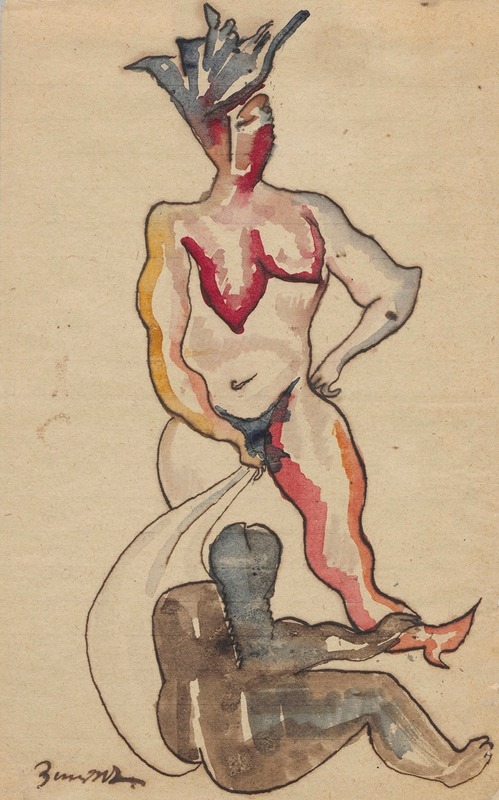
Figural composition
A hand-painted replica of Zygmunt Waliszewski’s masterpiece Figural composition, meticulously crafted by professional artists to capture the true essence of the original. Each piece is created with museum-quality canvas and rare mineral pigments, carefully painted by experienced artists with delicate brushstrokes and rich, layered colors to perfectly recreate the texture of the original artwork. Unlike machine-printed reproductions, this hand-painted version brings the painting to life, infused with the artist’s emotions and skill in every stroke. Whether for personal collection or home decoration, it instantly elevates the artistic atmosphere of any space.
Zygmunt Waliszewski was a notable Polish painter, born in 1897 in Saint Petersburg, Russia, and he became an influential figure in the Polish art scene during the early 20th century. He was part of the avant-garde movement and was known for his vibrant and expressive style, which often incorporated elements of Post-Impressionism and Fauvism. Waliszewski's works are characterized by their bold use of color and dynamic compositions, often depicting scenes from everyday life, landscapes, and figural compositions.
"Figural Composition" by Zygmunt Waliszewski is one of his notable works, showcasing his unique approach to form and color. While specific details about this particular painting are limited, it is representative of Waliszewski's broader artistic style and thematic interests. His figural compositions often feature a lively arrangement of human figures, depicted with a sense of movement and emotional intensity. The figures in his paintings are typically rendered with exaggerated features and vibrant hues, reflecting the influence of both modernist trends and traditional Polish art.
Waliszewski's education and artistic development were shaped by his studies at the Academy of Fine Arts in Kraków, where he was exposed to various artistic movements and techniques. His work was also influenced by his travels and interactions with other artists in Europe, particularly during his time in Paris, which was a hub for avant-garde art during the early 20th century. This exposure to different artistic styles and philosophies helped him to develop a distinctive voice in his paintings.
Throughout his career, Waliszewski participated in numerous exhibitions, both in Poland and internationally, gaining recognition for his innovative approach to painting. His works were celebrated for their ability to convey emotion and narrative through the use of color and form, and he became an important figure in the Polish art community. Despite his relatively short life—he passed away in 1936—Waliszewski left a lasting impact on the art world, and his works continue to be studied and appreciated for their contribution to modern art.
"Figural Composition" exemplifies Waliszewski's ability to blend traditional subject matter with modernist techniques, creating a dynamic and engaging visual experience. The painting likely features a group of figures arranged in a way that emphasizes their interactions and relationships, a common theme in his work. The use of bold colors and expressive brushwork would have been intended to evoke an emotional response from the viewer, drawing them into the scene and inviting them to explore the nuances of the composition.
Overall, Zygmunt Waliszewski's "Figural Composition" is a testament to his skill as a painter and his ability to capture the essence of human experience through art. His work remains an important part of the Polish cultural heritage and continues to inspire artists and art enthusiasts around the world.






